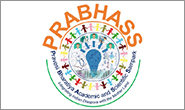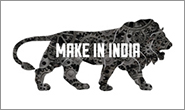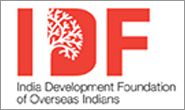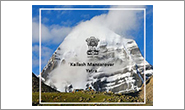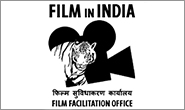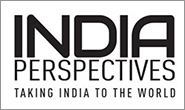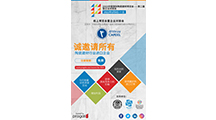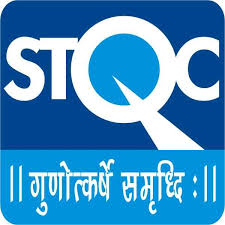Prof.Jacob Palis, President The Academy of Sciences for the Developing World (TWAS), Prof. Bai Chunli, President Chinese Academy of Sciences, Dr. Wan Gang, Hon’ble Minister of Science and Technology, China, Madam Dr. Gretchen Kalonji, Assistant Director General for Natural Sciences, UNESCO and the Chair of the 12th TWAS General Conference Ministerial Session on STI for Economic Growth & Poverty , Excellencies, Distinguished Scientists, Mediapersons , Ladies and Gentlemen.
It is a pleasure for me to join you all at the occasion of the Ministerial Session on Science, Technology, Innovation (STI) for Economic Growth and Poverty of the 12th TWAS General Conference at Tianjin, China. This is a signature event, held once in three years, to review the current state and deliberate upon the future prospects of science and technology of vital importance to the developing world.
I wish to share my views on the Changing Global Landscape of Science, Technology and Innovation with the august assembly of leaders in science from the developing world . I had an opportunity to meet and exchange views with Presidents of several Science Academies in South Asia and Africa during the Summit of South Asian Academies hosted by Indian National Science Academy (INSA) at New Delhi on September 6-9,2012. I seem to be in the company of scientists frequently in recent times. It is a new and likable experience.
Scientists like to solve problems. People like us in public life have to find solutions to problems faced by people. There is now an increasing public policy support for larger investments into science and technology.
I come from a southern state in India called Kerala. Last week the state had organized a mega event under the brand “Emerging Kerala” to make global connects. Such an event had included a special session on Science and Technology for Emerging Kerala.
Today I propose to outline some changing trends in the Science, Technology and Innovation landscape in India. I would like to make case also for cooperation among our countries in science sector from this platform.
Balancing between Competitive and Collaborative Excellence
Connecting the scientific knowledge to wealth and value creation is the path of emerging knowledge economy. Nations tend to maximize Gross Expenditure on Research and Development (GERD). Computation of Global Competitive Indices of countries includes also the percentage of GDP invested into R&D. These models seek competitive excellence.
I like to call also for inter-connections among the STI landscapes of some nations from the developing world. I would like to call for some efforts among us in promoting collaborative excellence in science sector today.
I foresee an opportunity for optimization of investments into R&D when we build on collaborative excellence. Sharing objectives, co-investments and co-generation of values to people through science seem to me as a new paradigm.
Changing Trends in Indian STI landscape
Indian science, technology and innovation (STI) landscape is changing in recent years. Public investments into STI have been increasing steadily since 2004. There are some early evidences of improvements in our global competitiveness with respect to number of publications in scientific journals or number of patents filed and granted. The Government of India has declared 2010-20 as “Decade of Innovations”. We are also in the process of formulating a new ‘Science Technology and Innovation Policy’. This new policy is expected to be released in early 2013. The policy would further reiterate the commitment of the National Government for increasing the R&D investment into R&D to the levels of 2% of GDP by 2017.
Investments by the private sector into R&D in India would also need to increase from the current share of 33% to at least 50% by 2017. We are discussing with the private sector for triggering larger engagement of the private sector into R&D through changes in policy environment. There has been a 250% increase in the investment of the private sector into R&D in 2010 compared to 2005. We would like step-up the engagement of the private sector into R&D by leveraging the tool of Public Private Partnerships for R&D and Clean Energy.
We have invested into attraction of talent to science sector. We are in the process of strengthening science education. New institutions have been built for fostering science education and research. We are in the process of redesigning our STI landscape. We are addressing the needs of securities of energy and environment, food and nutrition, water and sanitation, affordable human health care, sustainable habitat etc. We propose to rely on STI for addressing such challenges. Such measures would include also the integration of grass root informal innovation processes with the formal innovation system and connecting STI to market place. We are aware that such linkages between formal and informal innovation systems themselves would call for innovations. New policy for STI would lay equal emphasis on both people for science and science for people.
We foresee an opportunity for India to gain leadership in some select areas of science, technology and innovations. Our STI policy should facilitate our national priorities of faster, sustainable and inclusive growth. While science stream should focus on accelerated pace of growth, technological growth should be sustainable. Innovations must be affordable and promote inclusive growth of the country.
I am conscious of the fact that the lead time between investments into R&D and its outcomes in social environments is long. There are already some incremental changes in the STI landscape of India.
Call for Collaborations among Developing Countries in Science
Ladies and Gentlemen; many of us represent countries which are in the development phase of their histories. I am a historian by training. Prior to industrial revolution, the world was not divided as developing and developed. Differentiated access to technologies has caused global asymmetries during the last two hundred years. Competitiveness in trade is a global trend. Coupling between trade and technology has made innovation competition driven.
The world has come to realize that innovations backed by large capitals bypass large percentage of global population with limited purchasing power. If Innovations were to serve larger public and social good, there needs to be new approaches for collaboration among countries in innovation sector.
Themes like affordable human health care, mitigation of natural disasters, combating global change, protecting biodiversity and environment would call for higher levels of cooperation among countries than what is practised today.
On this occasion, I would like to make a call for provisions for collaborative excellence in STI sector among developing countries. We, together, could break new paths of technological development. We have come to realize the some technological paths adopted by the world during the last two hundred years are not sustainable. They may have even led to changes in global environment attributable to life style changes of man kind.
Way Forward
We may need to explore path breaking steps in the STI sector. I see a value for interconnecting some of our STI landscapes and research resources as well as collaborations among our scientists. Optimizing research resources for discovering new scientific solutions and affordable innovations for inclusive growth would call for greater level of collaboration among our nations.
TWAS is an academy for the developing world and India is a strong votary of the TWAS movement among developing countries. TWAS Young Affiliates & TWAS Research Grants to Least Developed Countries (LDCs) during the TWAS Presidency held by India (2000-2007) are indicators of India’s commitment to the cause of science in the developing countries. I do hope that TWAS would be able to promote increased levels of S&T cooperation among our nations.
New Indian STI policy would enunciate space for increased cooperation with developing world. We may need to develop indicators for measurements of benefits through Global Collaboration in STI space.
Concluding Remarks
Ladies and Gentlemen, I outlined the current status of STI landscape in India. There are some incremental changes and positive trends in our STI system during the last ten years. It is being further re-shaped to suit our future. I see a value in inter-connecting STI landscapes of some developing countries to our mutual and collective advantages.
I understand that TWAS has approached my Ministry for supporting Doctoral Fellowship Program in India for African Students, in association with African Development Bank. While this proposal is under examination, I am favourably inclined to this proposition.
I would like to leave a thought on collaborative excellence at least in some areas which work for global public good. I look forward to some discussions among the academicians gathered in this session on this subject. I wish the meeting all success and look forward to some recommendations to emerge from this meeting for collective implementation.
Thank you.

















